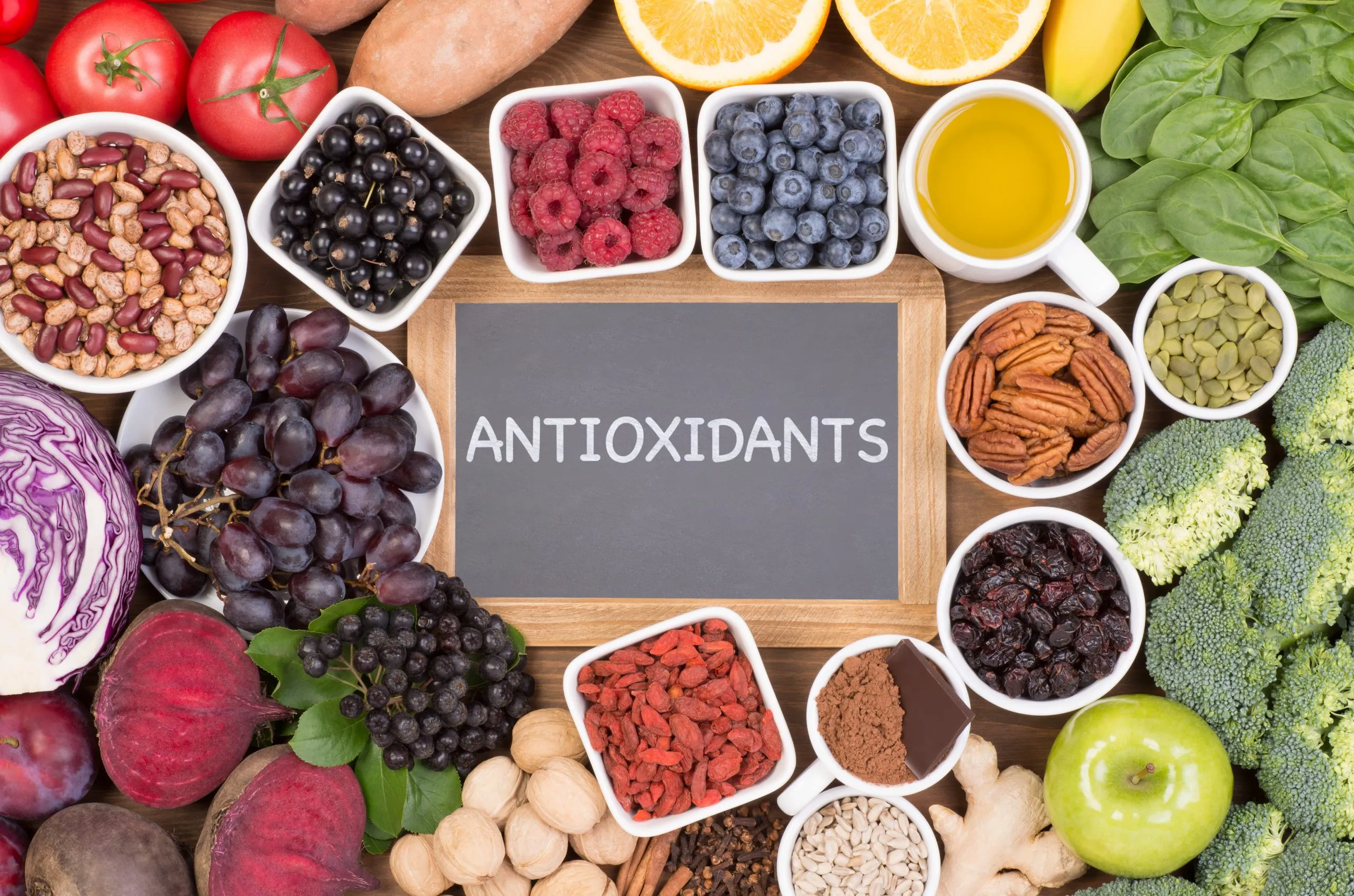
Antioxidants are substrates, which serve to protect a cell’s DNA, lipid membranes, and proteins from reactive oxygen species (ROS) (Duthie, 2003). As such, optimal levels of antioxidants are paramount in maintaining an organism’s health, performance, and longevity. Furthermore, ensuring that said substrate is adequately recycled for continued use is equal relevance (Gropper, Smith, & Carr, 2018).As a means of appreciating the recycling process of antioxidants, the following will explore the same.
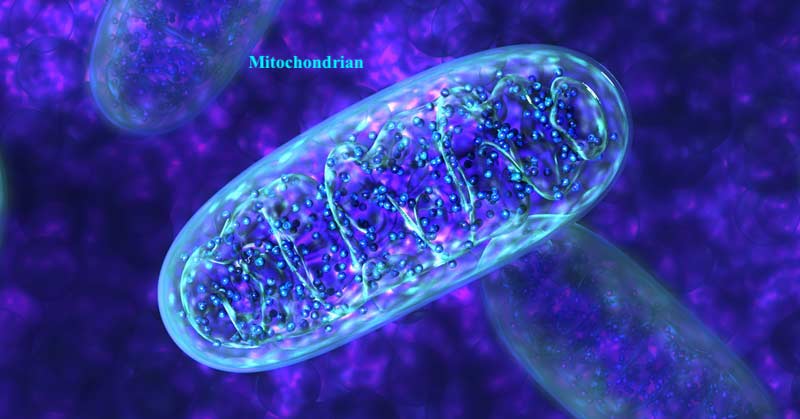
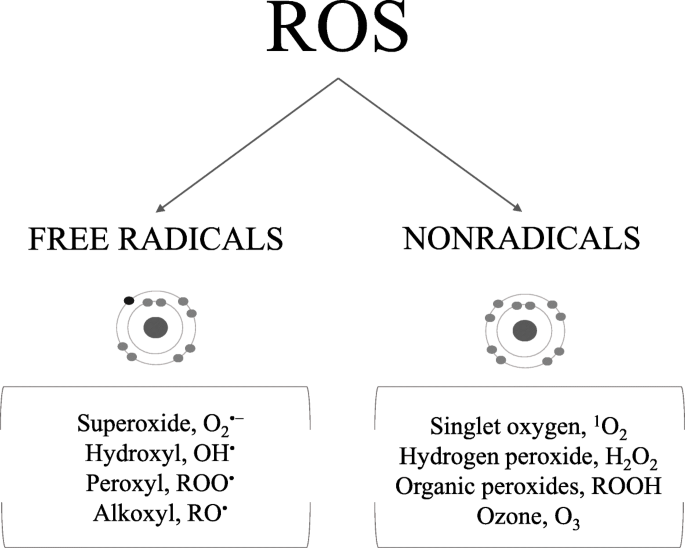
ROS are a natural consequence of cellular respiration; when adenosine triphosphate (ATP) is created within a mitochondrion, oxygen is required. A biochemical product from ATP production includes superoxide; a reactive substance, which is a progenitor of other types of ROS (Duthie, 2003). Antioxidants help control the reach and damage of ROS by “feeding” them electrons, thereby circumventing their capacity to interact with, and damage, cell structures (Duthie, 2003). Antioxidants, primarily in the form of vitamin C and vitamin E, can be derived from the diet as well as endogenous production. Recycling of such substances is a secondary means of maintaining optimal levels.

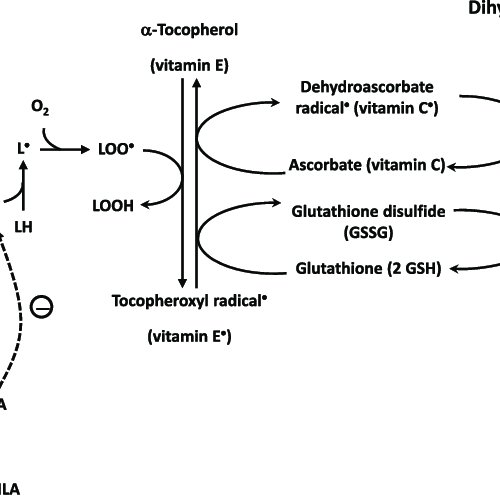
Maintaining an adaptive and integrated antioxidant defense system demands regenerating substances such as vitamin C and vitamin E (Duthie, 2003; Gropper et al., 2018). As Gropper et al. (2018) stated, an absence or down regulation of antioxidant recycling would inexorably lead to deeper oxidative damage. Vitamin E, once it provides electrons to a ROS, becomes oxidized (Gropper et al., 2018). In order for vitamin E (alpha tocopherol) to become an active and usable antioxidant again, it must go through several biochemical steps. Vitamin A can donate an electron to oxidized vitamin E to restore its function. However, vitamin A then becomes oxidized (Gropper et al., 2018). Ubiquinol (CoQ10) is another means of providing a hydrogen to oxidized vitamin E, in addition to reduced glutathione (GSH) providing its hydrogen atom (Gropper et al., 2018. Please see diagrams below:
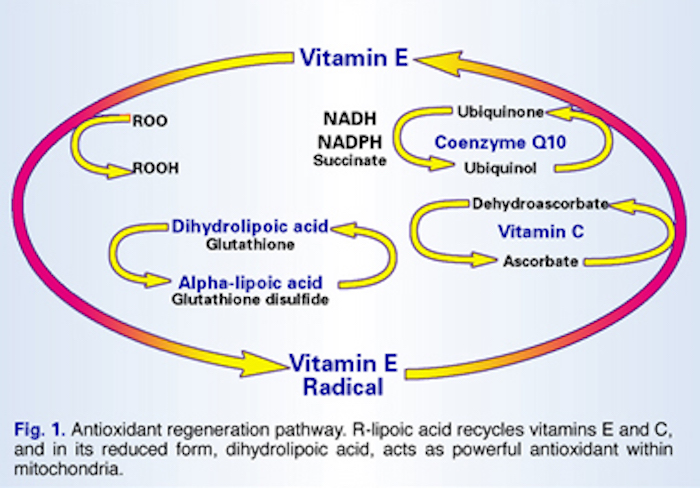
Vitamin C (ascorbic acid) is also regenerated with the presence of NADH (nicotinamide adenine dinucleotide); NADH donate hydrogen atoms to the ascorbyl radical (Gropper et al., 2018). Dihydrolipoic acid is another means of providing hydrogen atoms to oxidized vitamin C, in addition to glutathione (GSH) as seen below. Thioredoxin, Trx-(SH)2, can also provide hydrogen atoms to dehydroascorbic acid (DHAA) to form ascorbic acid. Please see diagrams below:
In conclusion, consumption of foods such as fruits, vegetables and plant oils are essential for maintaining optimal concentrations of antioxidants. However, it is also critical that the body recycle vitamins, like vitamin C and vitamin E. When combined, individuals are able to maintain an adaptive and integrated antioxidant defense system to maintain health, performance, and longevity.
References
Duthie, G. (2003). Antioxidants. Medicine, 31(4), 25-26.
Gropper, S. S., Smith, J. L., & Carr, T. P. (2018). Advanced nutrition and human metabolism (7thed.).Boston, MA: Cengage Learning.
-Michael McIsaac
